A Clockwork Orange, written by Anthony Burgess, is a dystopian novel that delves into themes of free will, morality, and the nature of humanity. Set in a near-future society overrun by youth violence, the story follows Alex, a charismatic and sociopathic teenager who leads a gang through acts of brutality and ultraviolence. After a series of heinous crimes, Alex is arrested and subjected to an experimental form of aversion therapy that renders him physically incapable of committing violence. The novel explores the consequences of this conditioning, raising profound questions about the ethics of behavioral control and the essence of human identity. Burgess’s inventive use of language, characterized by the unique slang known as Nadsat, adds another layer of complexity to the narrative, challenging readers to grapple with the intricacies of communication and understanding. A Clockwork Orange Summary remains a thought-provoking and controversial work that continues to spark discussion about the nature of evil and the limits of societal control.
A Clockwork Orange Summary
Introduction: A Clockwork Orange by Anthony Burgess is a novel that continues to captivate readers with its unsettling portrayal of a dystopian society plagued by violence and its thought-provoking exploration of themes such as free will, morality, and the nature of humanity. Published in 1962, Burgess’s work remains a seminal piece of literature that challenges conventional notions of behavior, punishment, and societal control. In this detailed review, we will delve into the intricacies of Burgess’s narrative, analyzing its characters, themes, and literary techniques to uncover the profound insights it offers.
Plot Summary: Set in a near-future England overrun by youth violence A Clockwork Orange follows the story of Alex, a charismatic and sociopathic teenager who leads a gang through acts of brutality and ultraviolence. The novel begins with Alex and his friends—Dim, Pete, and Georgie—committing a series of heinous crimes, including robbery, assault, and rape. As the leader of his gang, Alex revels in his power and dominance over others, displaying a complete disregard for authority and morality. Alex’s life takes a drastic turn when he is arrested for murder. Sentenced to prison, he becomes a pawn in a government experiment aimed at curing criminal behavior. Subjected to a controversial form of aversion therapy known as the Ludovico Technique, Alex is conditioned to feel intense nausea and pain whenever he experiences violent thoughts or impulses. As a result, he becomes physically incapable of committing acts of violence, effectively turning him into a clockwork orange—a creature devoid of genuine choice or free will.
Themes: At its core A Clockwork Orange grapples with complex themes that challenge readers to reconsider their understanding of morality, free will, and the essence of humanity. One of the central themes of the novel is the question of whether true morality can exist in a world where individuals are stripped of their ability to choose between right and wrong. Through Alex’s transformation from a remorseless criminal to a passive and obedient subject of the state, Burgess forces readers to confront the ethical implications of using coercion and manipulation to control human behavior.
Another key theme explored in the novel is the tension between individual freedom and societal order. Burgess raises important questions about the role of government and the limits of authority in shaping human conduct. By depicting a dystopian society where the government employs extreme measures to maintain social control, he warns against the dangers of sacrificing personal liberty in the name of security and stability.
A Clockwork Orange examines the nature of identity and the complexity of human psychology. Through his use of language, particularly the invented slang known as Nadsat Burgess, he invites readers into the mind of his protagonist, offering insights into the inner workings of Alex’s consciousness. This linguistic experimentation not only adds depth to the narrative but also highlights the subjective nature of perception and the fluidity of individual identity.
Character Analysis: Central to the success of A Clockwork Orange Summary are its richly drawn characters, each of whom contributes to the novel’s exploration of its thematic concerns. At the heart of the story is Alex, a complex and enigmatic figure whose journey from ruthless delinquent to helpless victim raises profound questions about the nature of evil and the capacity for redemption. Despite his despicable actions, Alex possesses a magnetic charm and intelligence that makes him both compelling and repulsive to readers.
Supporting characters such as Alex’s fellow gang members—Dim, Pete, and Georgie—serve as foils to his character, highlighting different aspects of his personality and moral code. While Dim is portrayed as a loyal but dim-witted follower, Pete and Georgie represent competing desires for power and dominance within the group. Together, they embody the destructive force of unchecked aggression and the corrosive influence of peer pressure on individual behavior.
Other significant characters include Alex’s parents, who serve as symbols of the breakdown of family and social values in the novel’s dystopian world, and Mr. Alexander, a writer who becomes the unwitting victim of Alex’s violence. Each character contributes to the novel’s exploration of moral ambiguity and the complex interplay between personal choice and external influences.
Literary Techniques: In addition to its thematic depth and compelling characters, A Clockwork Orange is distinguished by Burgess’s masterful use of literary techniques, including language, symbolism, and narrative structure. Perhaps the most striking aspect of the novel is Burgess’s creation of the Nadsat language, a mixture of Russian-influenced slang and English vocabulary that immerses readers in the world of Alex and his gang. This linguistic innovation not only serves as a stylistic device but also reflects the novel’s exploration of the power of language to shape thought and identity.
Symbolism plays a crucial role in A Clockwork Orange Summary, with recurring motifs such as music, clocks, and masks serving as potent symbols of the novel’s thematic concerns. Music, in particular, is used to underscore the emotional and psychological dimensions of Alex’s character as well as the broader societal tensions depicted in the novel. Likewise, the image of the clockwork orange—a seemingly perfect but ultimately artificial creation—serves as a powerful metaphor for the manipulation and control of human behavior.
Burgess’s narrative structure adds layers of complexity to the novel, as he employs techniques such as foreshadowing, flashbacks, and unreliable narration to keep readers engaged and guessing. The novel’s non-linear timeline, coupled with Alex’s unreliable perspective, challenges readers to piece together the fragmented narrative and uncover the deeper truths lurking beneath the surface.

What are the weaknesses of this book?
While A Clockwork Orange is widely regarded as a literary masterpiece, it is not without its weaknesses. One significant critique of the novel is its depiction of violence, which some readers may find gratuitous or sensationalized. Burgess’s graphic descriptions of Alex and his gang’s acts of brutality can be disturbing and difficult to stomach, leading some critics to argue that the novel crosses the line between artistic exploration and voyeuristic exploitation of violence. Burgess’s use of the Nadsat language, while innovative and immersive for some readers, can be alienating and challenging for others. The heavy reliance on slang and Russian-influenced vocabulary may hinder comprehension and detract from the overall reading experience for those unfamiliar with the language. Furthermore, the novel’s ambiguous conclusion has been a point of contention among readers and critics alike. While Burgess leaves the fate of Alex open to interpretation, some find the lack of resolution unsatisfying and feel that it undermines the thematic integrity of the narrative. The moral ambiguity of Alex’s character arc may leave readers questioning the novel’s ultimate message about redemption and personal responsibility. While A Clockwork Orange Summary remains a provocative and thought-provoking work, its portrayal of violence, challenging language, and ambiguous conclusion are weaknesses that may impact some readers’ enjoyment and interpretation of the text.
Also Read: The Red Tent Book Summary Review and Synopsis
A Clockwork Orange book age rating: suitable ages of readers
Determining a suitable age rating for A Clockwork Orange by Anthony Burgess can be challenging due to its mature themes, graphic violence, and explicit language. Given its content, the book is typically recommended for mature readers, generally ages 16 and older. The novel’s exploration of violence, antisocial behavior, and psychological manipulation may not be suitable for younger readers, as it could be disturbing or inappropriate for their age group. The graphic nature of the violent acts depicted in the book, including rape and assault, requires a level of maturity and understanding that younger readers may not possess.
Burgess’s use of the Nadsat language, a mixture of slang and Russian-influenced vocabulary, can be challenging for younger readers to comprehend fully, further supporting the recommendation for older audiences. Parental discretion is advised when determining whether A Clockwork Orange Summary is appropriate for younger readers. Parents and guardians should consider their child’s maturity level, sensitivity to violence, and ability to understand complex themes before allowing them to read the book. Discussing the novel’s themes and content with young readers can help provide context and guidance as they navigate the challenging material presented in the text.
Was there any way to improve the book A Clockwork Orange?
Certainly, A Clockwork Orange by Anthony Burgess is a groundbreaking work that has left a lasting impact on literature and popular culture. Like any piece of art, there are always areas that could potentially be improved upon. One aspect that some readers may find challenging is Burgess’s use of the Nadsat language. While this linguistic innovation adds depth to the narrative and immerses readers in the world of the characters, it can also be alienating and difficult to understand for some. A potential improvement could involve providing more context or explanation for the slang terms used, particularly for readers who may not be familiar with Russian-influenced vocabulary.
The novel’s portrayal of violence has been a point of contention for some readers. While Burgess’s intention may have been to shock and provoke thought, the graphic nature of the violence depicted could be considered gratuitous by some. Dialing back the explicitness of certain scenes while still maintaining the impact of the narrative could potentially make the book more accessible to a wider audience. The ambiguous ending of the novel has divided opinion among readers. While some appreciate the open-ended nature of Alex’s fate, others may find it unsatisfying or inconclusive. Providing more clarity or resolution in the conclusion could potentially strengthen the thematic coherence of the narrative and offer readers a more satisfying sense of closure.
A Clockwork Orange Summary is undeniably a seminal work of literature, but there are aspects that could be refined or adjusted to enhance the reading experience for certain audiences. It’s important to recognize that these potential improvements are subjective and may not be universally agreed upon by all readers.
Do readers of 2024 demand this book?
Readers in 2024 will continue to be drawn to A Clockwork Orange Review by Anthony Burgess, albeit with varying levels of interest and demand. While the novel remains a classic of dystopian literature and continues to be studied in academic settings, its appeal to mainstream readers may fluctuate depending on contemporary cultural and social contexts. The themes of free will, morality, and societal control explored in the novel remain relevant in an ever-changing world, resonating with readers who are interested in thought-provoking literature that challenges conventional norms and assumptions.
The graphic violence and explicit language in the book may deter some readers, particularly those who prefer more restrained or accessible narratives. The Nadsat language used by Burgess, while innovative and immersive for some, may pose a barrier to entry for others who struggle to understand its slang and Russian-influenced vocabulary.
Despite these potential obstacles, A Clockwork Orange Synopsis continues to find an audience among readers who appreciate its complexity, depth, and enduring relevance. Whether through individual exploration or guided study in academic settings, the novel continues to provoke discussion and inspire critical thinking about the nature of humanity, the limits of societal control, and the ethics of behavioral conditioning. As such, while demand for the book may ebb and flow over time, its status as a literary classic ensures that it will remain a significant and influential work for years to come.
Purchase This Book From Amazon
Should this book be worth reading now, in 2024?
In 2024, A Clockwork Orange Plot by Anthony Burgess remains a compelling and thought-provoking work of literature that is worth reading for those interested in exploring complex themes such as free will, morality, and societal control. Despite being published over six decades ago, the novel’s exploration of these timeless concepts continues to resonate with contemporary readers, offering valuable insights into the human condition and the ethical dilemmas faced by society.
The book’s innovative use of language, particularly the Nadsat slang, adds an extra layer of depth and richness to the narrative, making it a rewarding experience for readers who appreciate linguistic experimentation and literary craftsmanship. It’s important to note that A Clockwork Orange does contain graphic violence and explicit language, which may not be suitable for all readers. Those who are sensitive to such content should approach the book with caution or consider whether it aligns with their personal preferences and comfort levels. Review A Clockwork Orange may not be for everyone, but its enduring relevance, thought-provoking themes, and masterful storytelling make it a worthwhile read for those willing to engage with its challenging subject matter and complex characters.
Conclusion: A Clockwork Orange Review
A Clockwork Orange Book PDF by Anthony Burgess stands as a timeless masterpiece of literature that continues to captivate readers with its exploration of complex themes and innovative storytelling techniques. Burgess’s vivid portrayal of a dystopian society plagued by violence challenges readers to confront difficult questions about free will, morality, and the nature of humanity. Through the character of Alex and his journey from remorseless delinquent to helpless victim of societal manipulation, Burgess offers profound insights into the human condition and the dangers of sacrificing personal liberty in the pursuit of social order.
Despite its controversial content and challenging language, A Clockwork Orange remains a relevant and thought-provoking work that rewards careful examination and interpretation. Its enduring popularity and enduring impact on literature and popular culture serve as a testament to its enduring relevance and enduring appeal. In the end A Clockwork Orange Review is more than just a novel—it is a provocative and compelling exploration of the human psyche and the complexities of morality, making it a must-read for anyone interested in delving into the deeper questions of life and society.


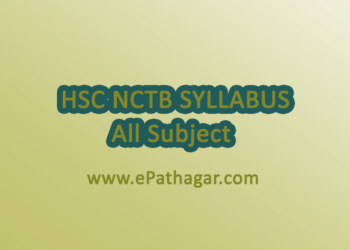
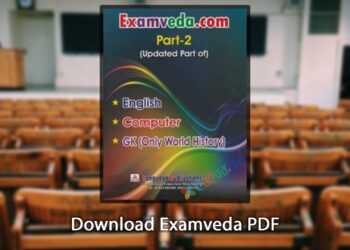

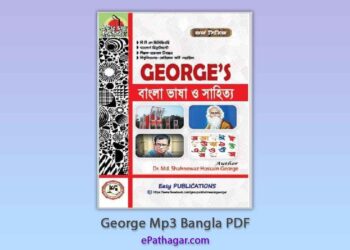



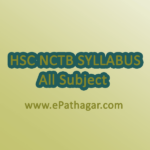

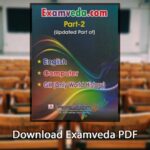
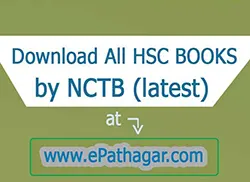
This Post Has 0 Comments